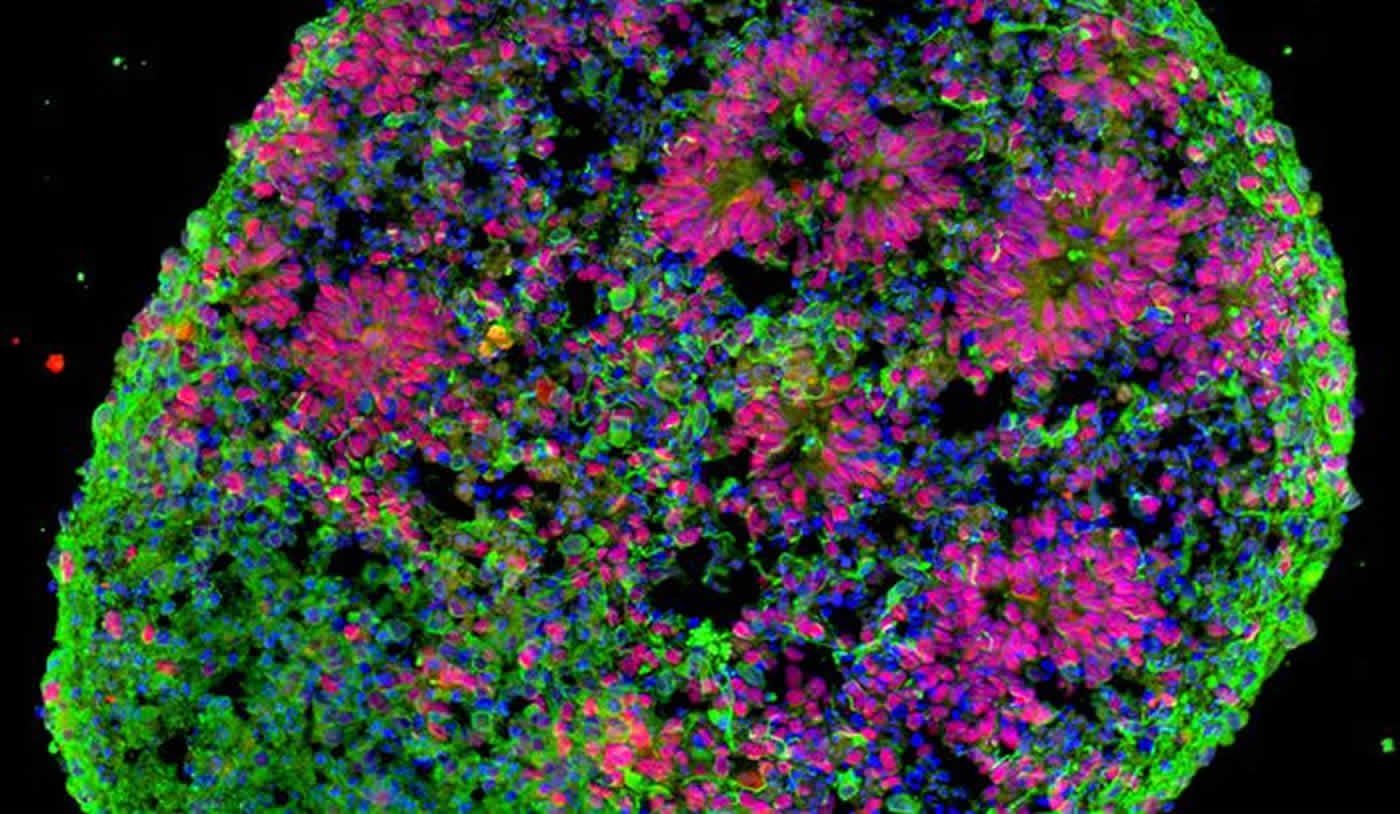A larger head size — or macrocephaly — is seen in many children with severe autism spectrum disorder (ASD). A new stem cell study of these children by Yale School of Medicine researchers could help predict ASD and may lead to new drug targets for autism treatment.
The findings are published in the July 16 issue of the journal Cell.
ASD is known to appear during brain development, but most cases of the disorder lack a clear origin or genetic basis. Recent studies of genetic mutations in rare cases of ASD hint that development of the cerebral cortex in the fetal period is abnormal in autism. The Yale research team sought to pinpoint what goes wrong as the cerebral cortex develops.
The team simulated early cerebral cortex development using stem cells generated from skin biopsies of four patients with ASD. They grew the stem cells into three-dimensional simulated miniature human brains (brain organoids). They then compared gene expression and developing cell types between the patients and their family members — typically their fathers — without ASD. Patients in the study had enlarged heads, which indicates worse autism outcomes.
“Brain growth abnormalities such as accelerated cell cycles, overproduction of inhibitory neurons, and synaptic overgrowth may all be precursors of a trajectory of brain development found in children with severe ASD,” said the study’s lead author Flora Vaccarino, the Harris Professor of Child Psychiatry and Professor of Neurobiology at Yale School of Medicine. “Our data provides a framework for studying normal human brain development and its disorders, including autism.”
“We discovered that the patients’ cells divided at a faster pace, and that they produced more inhibitory neurons and more synapses,” Vaccarino added. She and her team also noted a 10-fold increase in a gene called FOXG1, which is important in the early growth and development of neurons in the embryonic brain.

“By regulating FOXG1 expression levels in patients’ neural cells, we were able to reverse some of the neurobiological alterations,” said Vaccarino. “Indeed, correcting the FOXG1 overexpression prevented the overproduction of inhibitory neurons in patient’s cells. Remarkably, we also found a link between the extent of change in gene expression and the degree of a patient’s macrocephaly and autism severity.”
Vaccarino added that FOXG1 could be used as potential biomarkers or molecular signature of severe ASD and a potential drug target.
Other authors on the study included Jessica Mariani, Gianfilippo Coppola, Ping Zhang, Alexej Abyzov, Lauren Provini, Livia Tomasini, Mariangela Amenduni, Anna Szekely, Dean Palejev, Michael Wilson, Mark Gerstein, Elena Grigorenko, Katarzyna Chawarska, Kevin Pelphrey, and James Howe.
Funding: The study was funded by the National Institute of Mental Health, the State of Connecticut, and the Simons Foundation.
Source: Karen N. Peart – Yale School of Medicine
Image Credit: The image is credited to Yale School of Medicine
Original Research: Abstract for “FOXG1-Dependent Dysregulation of GABA/Glutamate Neuron Differentiation in Autism Spectrum Disorders” by Jessica Mariani, Gianfilippo Coppola, Ping Zhang, Alexej Abyzov, Lauren Provini, Livia Tomasini, Mariangela Amenduni, Anna Szekely, Dean Palejev11, Michael Wilson, Mark Gerstein, Elena L. Grigorenko, Katarzyna Chawarska, Kevin A. Pelphrey, James R. Howe, and Flora M. Vaccarino in Cell. Published online July 16 2015 doi:10.1016/j.cell.2015.06.034
Abstract
FOXG1-Dependent Dysregulation of GABA/Glutamate Neuron Differentiation in Autism Spectrum Disorders
Highlights
•iPSC-derived telencephalic organoids reflect human midfetal telencephalic development
•Inhibitory neurons are overproduced in organoids from patients with idiopathic autism
•Overproduction of inhibitory neurons is caused by increased FOXG1 gene expression
Summary
Autism spectrum disorder (ASD) is a disorder of brain development. Most cases lack a clear etiology or genetic basis, and the difficulty of re-enacting human brain development has precluded understanding of ASD pathophysiology. Here we use three-dimensional neural cultures (organoids) derived from induced pluripotent stem cells (iPSCs) to investigate neurodevelopmental alterations in individuals with severe idiopathic ASD. While no known underlying genomic mutation could be identified, transcriptome and gene network analyses revealed upregulation of genes involved in cell proliferation, neuronal differentiation, and synaptic assembly. ASD-derived organoids exhibit an accelerated cell cycle and overproduction of GABAergic inhibitory neurons. Using RNA interference, we show that overexpression of the transcription factor FOXG1 is responsible for the overproduction of GABAergic neurons. Altered expression of gene network modules and FOXG1 are positively correlated with symptom severity. Our data suggest that a shift toward GABAergic neuron fate caused by FOXG1 is a developmental precursor of ASD.
“FOXG1-Dependent Dysregulation of GABA/Glutamate Neuron Differentiation in Autism Spectrum Disorders” by Jessica Mariani, Gianfilippo Coppola, Ping Zhang, Alexej Abyzov, Lauren Provini, Livia Tomasini, Mariangela Amenduni, Anna Szekely, Dean Palejev11, Michael Wilson, Mark Gerstein, Elena L. Grigorenko, Katarzyna Chawarska, Kevin A. Pelphrey, James R. Howe, and Flora M. Vaccarino in Cell. Published online July 16 2015 doi:10.1016/j.cell.2015.06.034






